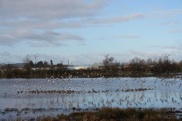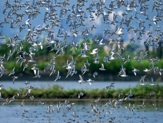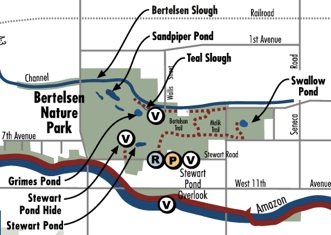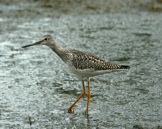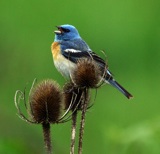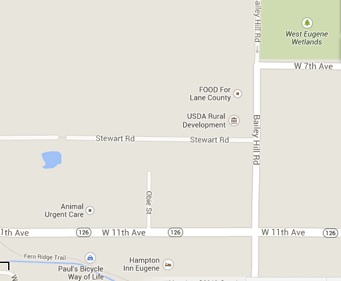Stewart Bertelsen





This site is best in winter and spring when seasonal runoff fills the ponds.
This unit of the West Eugene Wetlands is about 167 acres in size and includes Stewart Pond, Bertelsen Slough, Swallow Pond, and Sandpiper Pond. Collectively called Bertelsen Nature Park, these lands are owned by the Bureau of Land Management (BLM), City of Eugene, and Oregon Department of Transportation (ODOT). There is a blind for viewing the seasonal pond and visiting waterfowl.
Sightings:
In winter and spring, Stewart Pond can host a variety of waterfowl, including Mallard, Green-winged Teal, American Wigeon, Northern Shoveler, and Canada Goose with rarities like Eurasian Wigeon and Common Teal showing up occasionally. Large, winter flocks of Dunlin put on dazzling flight displays; Ruff have been sighted. In spring, when water and mudflat conditions are right, shorebird migration at Stewart Pond can be very rewarding: Solitary Sandpiper, Greater Yellowlegs, and Wilson's and Red-necked Phalaropes appear. Rare visitors have included White-faced Ibis, Say's and Black Phoebes and Yellow-headed Blackbird. Green Herons nest nearby. In spring, look for Lazuli Bunting singing atop nearby small trees and shrubs.
From the parking lot at Stewart Pond, you can walk north along a marked trail to a boardwalk that leads through ash woods at the bottom of Stewart Knoll. At the entrance to the woods, you can continue east on Malik Trail to Bailey Hill Road. Cross this busy road, and the trail leads to the 17-acre Swallow Pond site. This site is historic, as it was the first west Eugene wetland parcel purchased by BLM. Lazuli Bunting, Black-headed Grosbeak, Cedar Waxwing, and several species of swallows can be found at Swallow Pond, as well as dabbling ducks and Green Heron. Back at the ash woodlands, forest birds greet you as you walk under the canopy, including Black-capped Chickadee, Bewick's Wren, Downy Woodpecker, and maybe a Cooper's or Red-shouldered Hawk can be observed.
After reaching the opening on the north side of the woods, travel west along W. 5th Avenue to Teal Slough. Climbing the mound here allows you to look over the slough and Grimes Pond. Cinnamon, Green-winged and Blue-winged Teal, as well as several swallow species can be seen. Listen for Common Yellowthroat and Western Wood-Pewee. Diving ducks frequent Grimes Pond; watch for Bufflehead, Hooded Merganser, and Ring-necked Duck. Continue west through a gate along the dike toward Bertelsen Slough. You will cross a culvert that leads south along the western end of Grimes pond. To your west are young cottonwoods and willows growing around Sandpiper Pond. Created by ODOT, this pond can yield a variety of waterfowl and shorebirds; rare visitors have included semi-palmated Sandpiper and Palm Warbler. Belted Kingfisher is common. Swallows and Vaux's Swift often dip the pond's surface to drink or swoop low to catch insects over the water. This site also is home to a variety of species of dragonflies and damselflies.
From Sandpiper Pond, walk south toward Stewart Road. Look for warblers and sparrows in the hedge row on the west side of Stewart Pond. In the prairie to the west watch for White-tailed Kite and Western Meadowlark in winter. At Stewart Road, check out the small wetland on the south side for songbirds. You can get good views of Stewart Pond as you walk back up Stewart Knoll to the parking lot, finishing your grand tour.


Dunlin in flight
